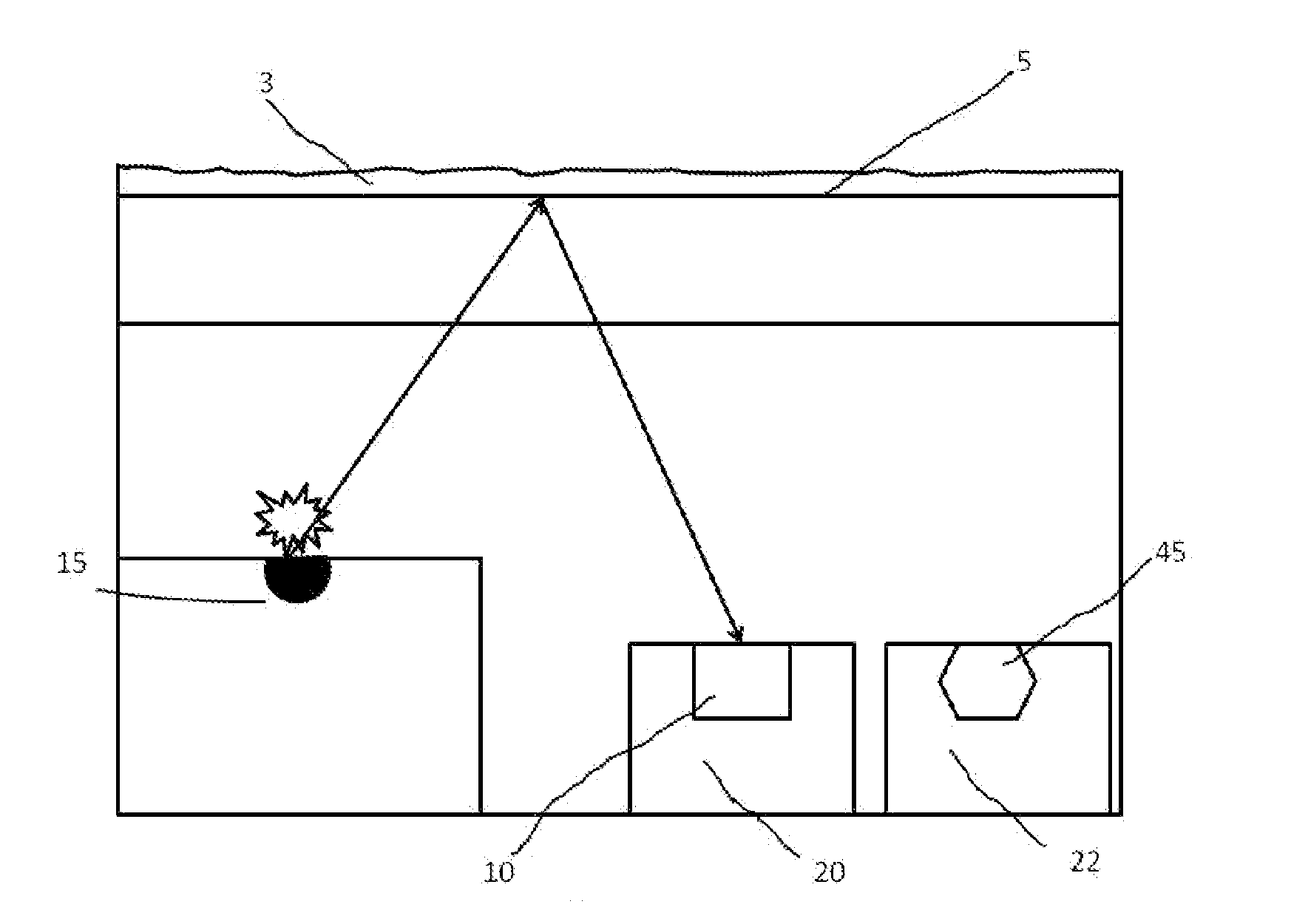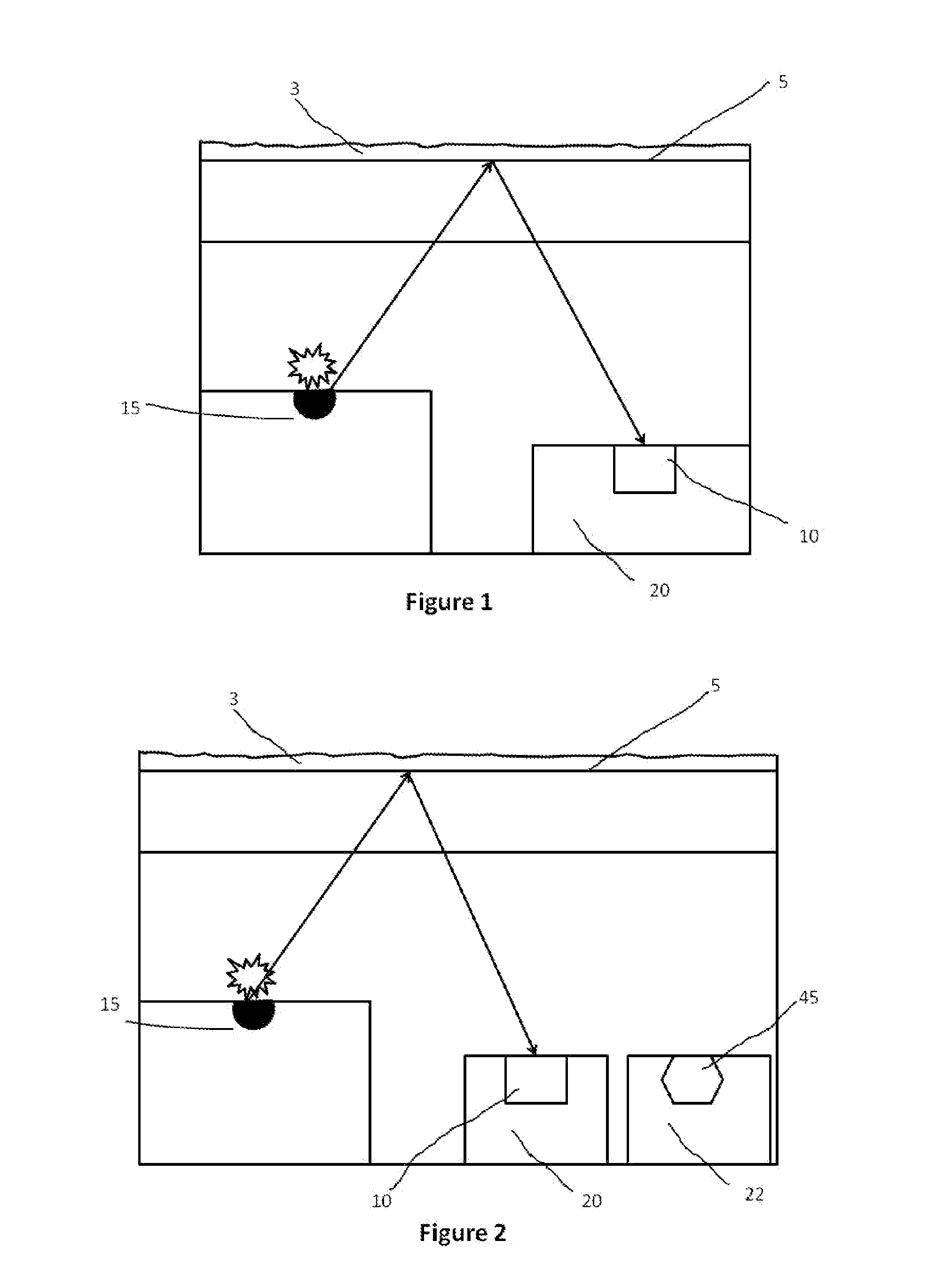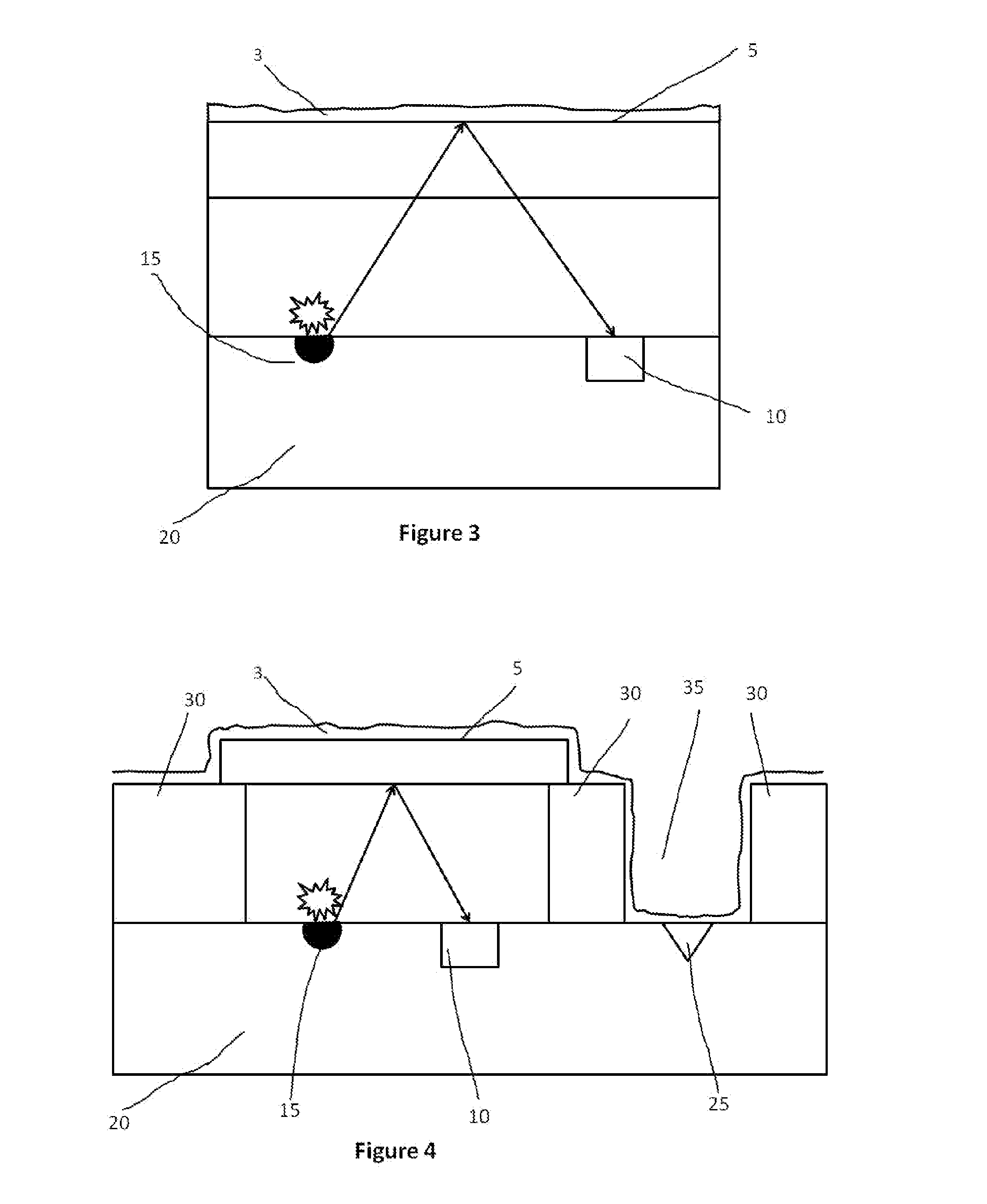Fouling layer detection on an environmental sensor
a detection field and environmental sensor technology, applied in the field of environmental sensors, can solve the problems of inability to correct the reading of the parameters of interest, suffer fouling layer accumulation, etc., and achieve the effect of low cost manufacturing and simplified sensor packaging
- Summary
- Abstract
- Description
- Claims
- Application Information
AI Technical Summary
Benefits of technology
Problems solved by technology
Method used
Image
Examples
first embodiment
[0040] the light sensor is integrated in a semiconductor substrate. The light sensor can be a simple device such as a light dependent resistor (LDR) or a more advanced device such as one based on photodiodes or phototransistors in the semiconductor substrate that control the flow of holes or electrons across their PN junctions. By combining refraction grids on top of the semiconductor substrate it is possible to let only light at a specific wavelength pass on to the light sensor. The grids can be made during the manufacturing of the different devices in semiconductor substrate from parallel lines made out of polysilicon, dielectric or metal materials. By proper choice of the line spacings, light with different wavelengths can be tuned to reach the light sensor. By combining several light sensors with different grids it is possible to generate an intensity profile at different wavelengths of the received light. This feature can be particularly useful in situations where the nature of...
second embodiment
[0041]FIG. 2 schematically illustrates the invention. In accordance with this embodiment, there is provided a light source 15, a light sensor 10 in a semiconductor substrate 20, a surface 5 and a further sensor 45 (for example a temperature sensor) also in a substrate 22. In this way it is possible to extend the environmental sensor with many more sensors that by nature are difficult to integrate in one common semiconductor substrate. For example the light source can be made in a GaN substrate, the light sensor could be made in a CdS substrate and the temperature sensor in a silicon substrate.
[0042]FIG. 3 schematically illustrates a third embodiment of the invention. In accordance with this embodiment, there is provided a light source 15, a light sensor 10 in a semiconductor substrate 20 and a surface 5. According to this embodiment of the invention, the light source 15 and the light sensor are integrated in a common semiconductor substrate. This embodiment takes advantage of semico...
PUM
| Property | Measurement | Unit |
|---|---|---|
| thickness | aaaaa | aaaaa |
| frequency spectrum | aaaaa | aaaaa |
| semiconductor | aaaaa | aaaaa |
Abstract
Description
Claims
Application Information
 Login to View More
Login to View More - R&D
- Intellectual Property
- Life Sciences
- Materials
- Tech Scout
- Unparalleled Data Quality
- Higher Quality Content
- 60% Fewer Hallucinations
Browse by: Latest US Patents, China's latest patents, Technical Efficacy Thesaurus, Application Domain, Technology Topic, Popular Technical Reports.
© 2025 PatSnap. All rights reserved.Legal|Privacy policy|Modern Slavery Act Transparency Statement|Sitemap|About US| Contact US: help@patsnap.com



